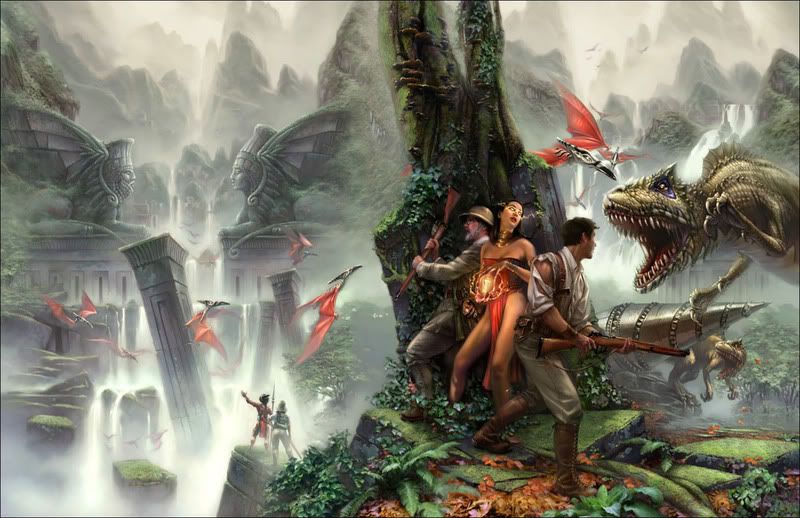In any case, orcs always start with Tolkien and his descriptions aren't exactly comprehensive. He refers to swart, black and sallow skin, fangs, red eyes, squint eyes, being short, being hairy, having long ape-like arms (at least on some individuals) and a few other adjectives that occasionally point to a contradictory—or more likely varied and diverse—description. In general, the Lord of the Rings movies did a reasonably credible job of depicting them; not exactly what I would have done, but I can't really fault them in general and I actually like the look. Warhammer and Warcraft, on the other hand, have cemented the orc look as a kind of parody with physiques like hairless gorillas with kelly green skin ("Faith and begora! Yer after me Lucky Charms!"), gigantic lower jaws and chins that look so heavy its a marvel that they can even close their mouths at all, an in general a lot of campiness. D&D has varied over the years, from orange-skinned men with pigs-heads to today's situation where many of the core illustrations don't even match the description of them. The Monster Manual, the Dungeonmaster's Guide and Savage Species all have Warhammer-esque orcs with green skin and heads bigger than watermelons, 75% of which is pure jaw. The thought of these monstrosities mating with humans—even as the product of rape—to produce half-orcs is frankly too vile to consider.
Some of the more recent illustrations are better, and for my money the best orc illustrations out there are on some fo the Freeport covers by Wayne Reynolds. The Pirate's Guide to Freeport and the Freeport Trilogy covers are the best, showing orcs that are stocky and robust with a thicker skeleto-muscular system than humans, coarse hair, wide, spreading, flat noses (and faces), prominent tusks in the lower jaw, large pointed ears, and grayish skin. They don't look human, but they also don't really look like monsters. They're humanoids—or demihumans if you prefer—with a tendency towards savagery and lack of high culture, but no more monstrous really than an elf or a dwarf. I tend to think of orcs as if they were hold-out populations of Neanderthal men in the Middle Ages rather than monsters or bogeymen.


Here's a few great pictures (also from WAR's online gallery) of what I think half-orcs should look like as well.


Hobgoblins are another race that sadly suffers from poor illustration. I tend to think of them as looking more like the illustrations of githyanki really, except without the crazy hair, spots, and pathological emaciation.




